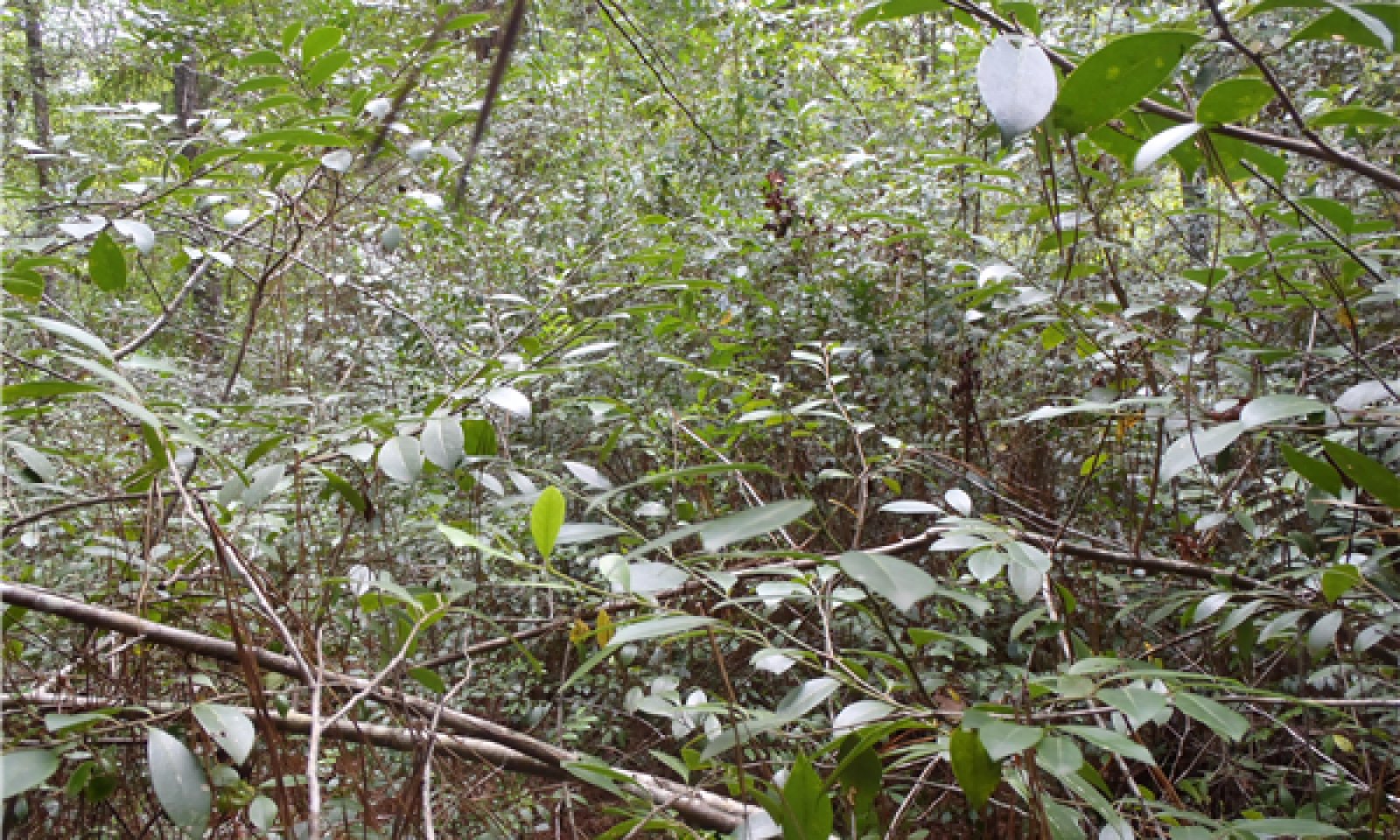
Acid Baygall
Scenario model
Current ecosystem state
Select a state
Management practices/drivers
Select a transition or restoration pathway
- Transition T 1-2 More details
- Restoration pathway R 2-1 More details
-
No transition or restoration pathway between the selected states has been described
Target ecosystem state
Select a state
Description
The Acid Baygall is a Large Gallberry thicket. The largest factor to plant development is the acidic nature of the soils. Only species that can handle a pH near 3.5 can persist. The seasonally high water table also attracts species that can survive in a wet environment. Because of this wetness and the fire-retardant shrubs, fire is usually non-existent. The exception is when the surrounding, pine-dominated uplands burn into the thicket.
Submodel
Mechanism
The transition is due to the land manager maximizing silviculture potential. Merchantable timber is harvested by clearcut. Then, the site is prepared and planted to a monoculture of pine trees.
Mechanism
This restoration pathway can be accomplished by removing the unwanted overstory species. The understory shrub layer will more-than-likely redevelops without assistance. But, if the desired reference species are not reestablishing, the land manager may have plant species. Since the site is highly unique, it may be difficult to find commercial species available.
Model keys
Briefcase
Add ecological sites and Major Land Resource Areas to your briefcase by clicking on the briefcase (![]() ) icon wherever it occurs. Drag and drop items to reorder. Cookies are used to store briefcase items between browsing sessions. Because of this, the number of items that can be added to your briefcase is limited, and briefcase items added on one device and browser cannot be accessed from another device or browser. Users who do not wish to place cookies on their devices should not use the briefcase tool. Briefcase cookies serve no other purpose than described here and are deleted whenever browsing history is cleared.
) icon wherever it occurs. Drag and drop items to reorder. Cookies are used to store briefcase items between browsing sessions. Because of this, the number of items that can be added to your briefcase is limited, and briefcase items added on one device and browser cannot be accessed from another device or browser. Users who do not wish to place cookies on their devices should not use the briefcase tool. Briefcase cookies serve no other purpose than described here and are deleted whenever browsing history is cleared.
Ecological sites
Major Land Resource Areas
The Ecosystem Dynamics Interpretive Tool is an information system framework developed by the USDA-ARS Jornada Experimental Range, USDA Natural Resources Conservation Service, and New Mexico State University.
